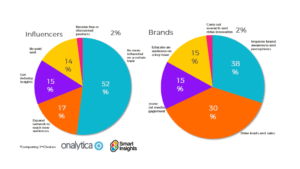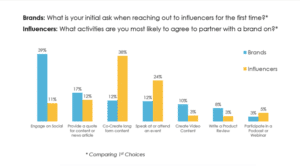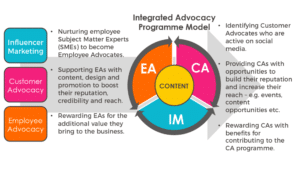B2B Influencer Marketing Developments for 2020

Luke Brynley-Jones, Founder & Managing Director
Catch the third chapter in a series of blog posts brought to you by OST Marketing. Managing Director, Luke Brynley-Jones, explores how the recent developments in B2B influencer marketing may impact your strategy. Read all about what motivates your influencers and our recommendations on how to get them on board. Download the ebook for the full 2020 social media marketing strategy checklist.
B2B influencer marketing is a rapidly growing activity. It is now common practice for B2B brands to run ongoing influencer programmes that seek to integrate tens, or even hundreds, of influencers into their marketing activities.
In total, around 30% of influencer marketing campaigns are currently in the B2B sector. Of these, nearly 65% are campaign-based (against long-term), so we expect to see further significant growth within B2B during 2020.
What motivates B2B influencers?
B2B influencers want to grow their networks to help their real-world business or career, whereas consumer influencers usually want to make a career from being an influencer. This usually means that B2B influencers are more concerned about their reputation and credibility, while consumer influencers are more motivated by payment.
A recent study by Onalytica and Smart Insights, which focused more on the B2B sector, highlighted the motivations of B2B influencers and compared them to those of the B2B brands working with them. Brands tend to be keener to drive sales and improve brand awareness, while influencers want to boost their own influence.

There is a disconnect between brands and Influencers
Source: Onalytica / Smart Insights, https://onalytica.com/blog/posts/ebook-the-complete-guide-to-industry-b2b-influencer-marketing/
Do B2B influencers need paying?
B2B influencer marketing is often based on a basis mutual value exchange, rather than payment. This works better for larger brands, which can sometimes have a greater online reach than individual influencers and can also offer exciting value-added benefits, such as brand association.
That said, brands frequently still approach influencers with offers that fail to motivate them. Offering influencers free tickets to events, or asking them to share a social post, is not seen as a credible incentive for many. The chart below, taken from the Onalytica report, shows the mismatch between the approach of brands and the desire of influencers.
The end-game for B2B influencer marketing: Integrated Advocacy
Savvy B2B brands are leveraging advocacy in multiple ways, including working with influencers, staff, and customers. If B2B brands are able to combine external credibility with internal expertise and customer endorsements within a single marketing activity, such as a webinar or e-book, it can create a powerful message for prospective customers.
Creating a successful Integrated Advocacy Programme involves:
- Nurturing employee Subject Matter Experts to become Employee Advocates (EAs).
- Supporting EAs with design and promotion to boost their reputation, credibility and reach.
- Rewarding EAs for the additional value they bring to the business.
- Identifying Customer Advocates (CAs) who are active on social media.
- Providing CAs with opportunities to build their reputation and increase their reach – such as events and content opportunities.
- Rewarding CAs with benefits for contributing to the CA programme.
Thank you for reading! If you want to find out more, download our full ebook here – or get in contact with us at hello@ostmarketing.com




